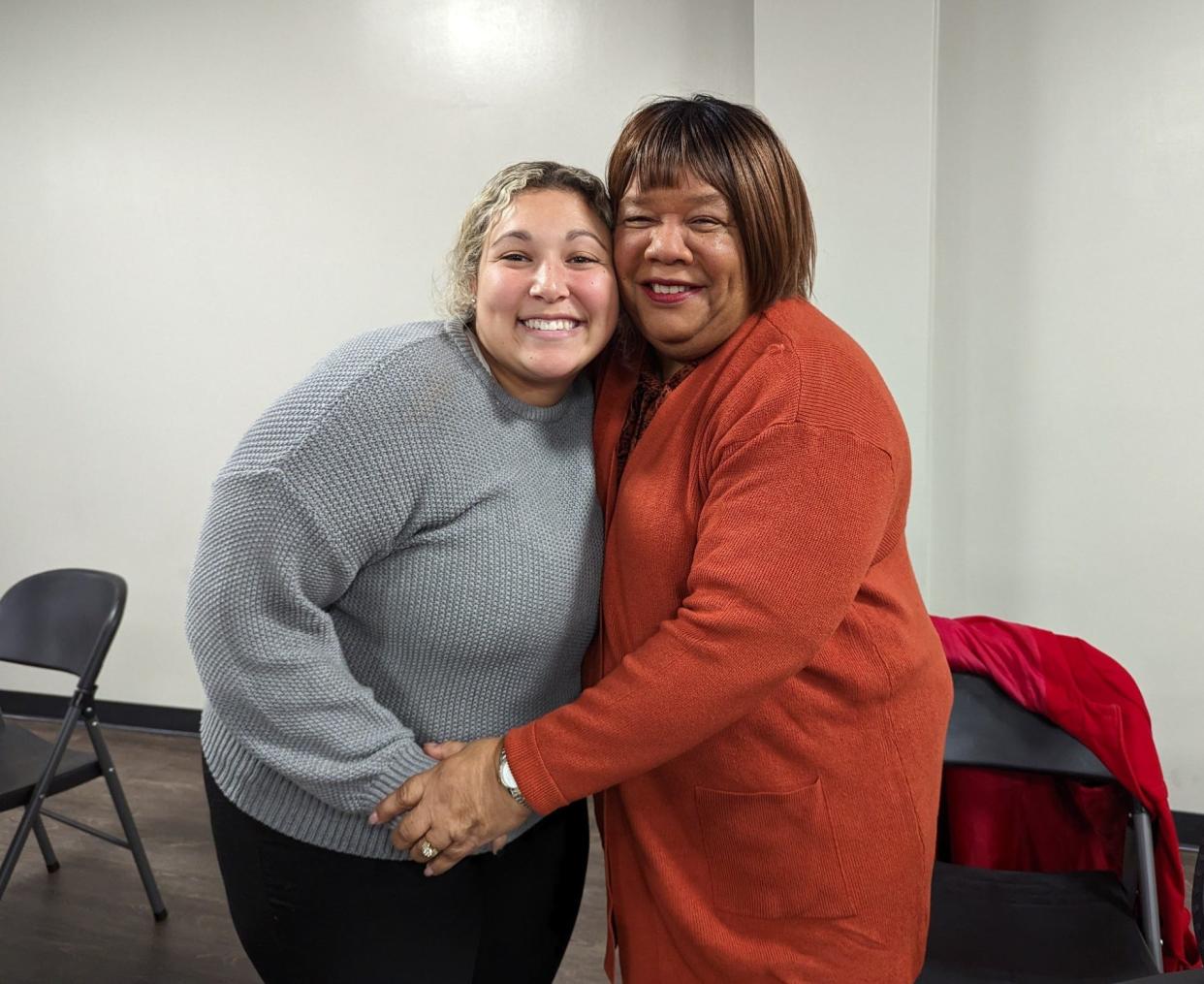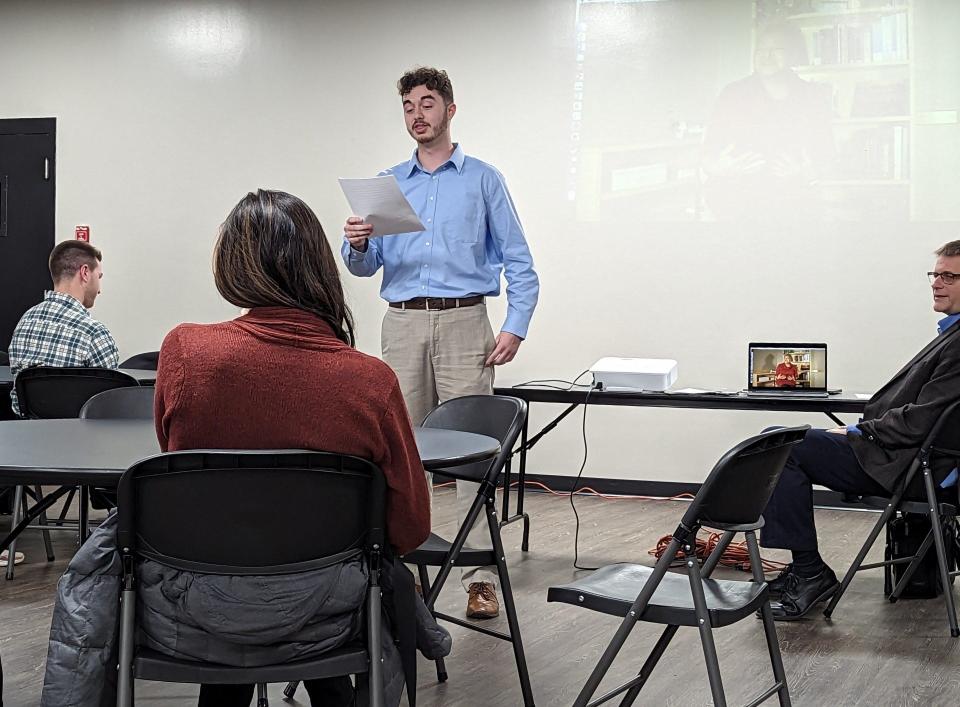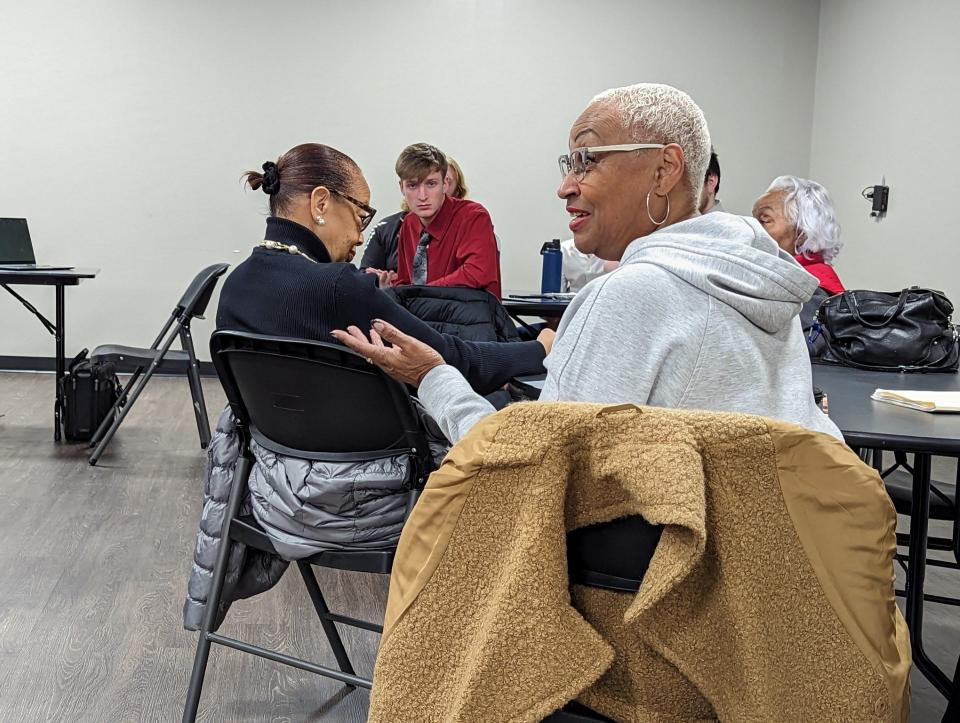'It broke the neighborhood.' Malone students capture voices from southeast Canton

CANTON − During the 1960s and 1970s, more than 300 homes, businesses and churches in southeast Canton were demolished to make way for U.S. Route 30, the Cherry Avenue SE overpass and industrial space.
Lives were uprooted.
Routines were disrupted.
All in the name of urban renewal.
A group of Malone University students set out to hear from those who were displaced and share their voices by producing a series of oral histories. The senior research project, "Voices From Southeast Canton: A Historical Look," examines the personal stories and experiences of some of the families who directly affected.
Jay Case, a professor of history at Malone, said the interviews will be donated to the McKinley Presidential Library and Museum, which is working in partnership with a group of civic leaders to establish a permanent Black history exhibit within the museum.
"These oral histories that we put together are preserved for the future," he said. "It could be for family members who want to come and see and hear stories about southeast Canton. But there are also things going on that are bigger than that. This is a story about a community, and about a city, and about a county."
Life on Lafayette: Residents recall former Canton street wiped out by urban renewal
Malone University students present their findings
Several students recently gave presentations of their findings at the Southeast Community Center in partnership with the Stark County Urban League. They included Andrew Hoskins, Mackenzie Bozman, Mykayla Askew, Matt Simeone, Max Gucker and Windy Singo.
Hoskins was one of several students who said they were surprised to learn that southeast Canton was once home to vibrant and close-knit neighborhoods, and that many of the former residents still maintain ties.

He described the community as a "Front porch fellowship."
"You've heard the saying that 'It takes a village,' but what made southeast Canton great is they put it to practice," he said.
Hoskins added that he learned how the community was an example of parental resilience and generational wealth because many residents' homes were paid in full.
"These qualities became evident in our interviews," he said. "We came to understand that there was once a tightly made community of hard-working people who successfully nurtured extraordinary individuals like themselves. It saddens me to learn that external forces have disrupted a way of life, because it was a structure that is rarely found today."
Bozman said that before embarking on the project, she didn't know such a neighborhood ever existed in Canton.
"They functioned like an extended family," she said. "It seems American society has gotten away from community-based living, and gone toward individualism. We've gotten richer, but our community ties are weaker."
Earlier this year, a group of former residents of Lafayette Street SE organized a reunion. Today, Detroit Diesel occupies the footprints of the street, which was demolished.
"Everybody had a front porch," recalled Lydia Bess-Lee, one of the reunion organizers. "The importance of this, to me, is preserving history and the stories. But it's also about doing something to help the current situation."
Bess-Lee, who also is working on the McKinley Museum plan, cited undeveloped and weed-filled lots on 11th Street SE, and a large portion of the former Hercules Building, which remains an eyesore.
'It made me long to be a part of a community like that.'
Askew wrote transcripts and helped to conduct several interviews.
"It made me long to be part of a community like that," she said.
One of those she interviewed was Patty Stokes Williams.
"For me, it was an honor to share those memories," Williams said.
Williams, whose family lived on Lafayette and Liberty Streets SE, recalled the large family gatherings at her grandmother's house after church and on some holidays, and how her mother would give her a "look" when she was misbehaving in church.
"We'd go to Ferraro's Bakery and get free bread," she said. "We'd get our groceries from Maggiore's. I just remember the closeness. If you got into trouble, everybody seemed to know everybody else's phone number."
Her grandmother was one of those shortchanged by urban renewal.
"She didn't get the full value of her house," she said. "She had to take out a mortgage (for her new house), and start all over."
Urban renewal: 'It broke the neighborhood.'
Simeone's presentation touched on the roots of urban renewal and its aftereffects, one of them being that displaced homeowners and businesses usually didn't receive adequate compensation to purchase equivalent properties elsewhere. Also, in some cases, they couldn't purchase homes in other neighborhoods due to discrimination.
As a result, some ended up renting, in public housing or in poverty.
"It broke the neighborhood. Even some churches fell apart," he said. "People lost a sense of belonging."
Simeone shared that urban renewal was the brainchild of New York City planner Robert Moses, whose projects in that city in the 1950s displaced 500,000 mostly Black and Latino residents. Simeone informed the audience that Canton City Council at the time requested a report from Moses, on which it based its own plan.
A vision of progress
Gucker said he was astonished to learn there were neighborhood grocery stores where customers could establish a"bill and pay later.
"When you talked about businesses that would allow you to defer payments, it's novel and foreign to us in 2023," he said. "I hope one of the lessons that we have learned is that surrounding yourself with people who care about each other is an element of success. One day, I hope to experience a neighborhood that supports itself the way yours did."
Gucker said he also was surprised to learn that highways could be constructed at the expense of homes and businesses through eminent domain.
"The current state of southeast Canton left us in disbelief," he said. "What was once the answer to generational wealth, the story of the family unit in America and a vision of progress, now lies in an area with increased poverty and limited resources."
Singo, a political science major, noted that "history is not just what happened, but who it happened to."
"That's what makes writing down history so important," she said. "These stories could have vanished if residents didn't help. This community had go-getters. It was a large and flourishing community, with their own grocery stores, bars and restaurants. Their 'belongingness' to each other has never been (diminished)."

Resident Steve Pressley said walking through his old neighborhood and remembering what used to be makes him sad.
"This was a community of hundreds of working families," he said. "We came from parents who were hard-working people. There wasn't violence, like some people think, but extended families. I'm glad it's being told. It's heartening."
Wilhelmina Jackson Glenn recalled her parents' anger at being displaced, and her own trauma after the family moved into a mostly white neighborhood on the east side of town, not far from Louisville.
She went from walking to high school with lifelong friends to having to ride a bus with strangers.
"The bus driver wouldn't pick me up," she said. "My parents had to call the school, and they had to have conversations with me on how to handle it. My mission became when someone tried to talk about the southeast end, I wasn't having it."
The Rev. Sherman Martin Jr., pastor of Union Baptist Church, which was once located in southeast Canton, said he lived in the community until age 5, but frequently returned there to play baseball with the Canton Mighty Mites.
Martin said he laments that the baseball fields in southeast Canton are now rarely used.
"You don't see anybody playing Mighty Mites Baseball anymore," he said. "Those kinds of things help a community."
In the 50 years since urban renewal, the area has been bereft of retail, recreation, jobs and housing development — the exception being construction by Habitat for Humanity.
However, Terrie Williams, the new director of Resident Services at Stark Metropolitan Housing Authority, announced that the agency has received a $500,000 Choice Neighborhood Planning Grant from the U.S. Department of Housing and Urban Development to develop a transformation strategy for southeast Canton.
A formal kickoff will take place in January.
"It has three goals," she said. "Housing, people and neighborhoods."
Viola Fisher and her siblings were raised in what she calls "war housing," the first generation of public housing built in southeast Canton after World War II.
She recalled picking wild blackberries and attending the St. Anthony Church festival.
"We never felt poor," she said. "It was a good community."
Reach Charita at 330-580-8313 or charita.goshay@cantonrep.com.
On Twitter: @cgoshayREP
This article originally appeared on The Repository: Malone U students interview displaced SE Canton residents for project

